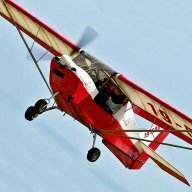For what it's worth, that 2016 FAA Advisory Circular has recently been replaced by AC 90-48E. If you wade through the whole belaboured document, you're likely to find its main message quite contradictory. It insists both that a pilot's visual scan remains the main game and that a pilot's visual scan is totally inadequate to the job of avoiding midairs. For example:
7.1 ... The NTSB released Safety Alert SA-058 on midair collision prevention technology, which states, in part, “The ‘see-and-avoid’ concept has long been the foundation of midair collision prevention. However, the inherent limitations of this concept, including human limitations, environmental conditions, aircraft blind spots, and operational distractions, leave even the most diligent pilot vulnerable to the threat of a midair collision with an unseen aircraft.”
Then it goes on to push the need for ADSB ... before returning to its original theme.
(I get the feeling that this is because regulators, in general, abhor the idea letting - or even appearing to let - pilots off the hook - any hook, especially in advance.)
In any case, even CASA's equivalent circular, AC 91-14 v.1,
takes a bit of a swipe at some of the FAA's visual scanning recommendations:
7.1.2 The current version of Federal Aviation Administration (FAA) AC 90-48 details a scanning technique that involves eye movements in sectors of 10 degrees of one-second duration per sector. However, scanning a 180-degree horizontal and 30-degree vertical sector would take a minimum of 54 seconds. US military research found that it takes a pilot 12.5 seconds to avoid a collision after target detection. Therefore, it can be deduced that considerable time gaps exist where traffic may not be detected during a normal scan period. Such a structured and disciplined scan technique may also be difficult to achieve.
LOL
FAA AC 90-48E.pdf advisory-circular-91-14-pilots-responsibility-collision-avoidance.pdf






